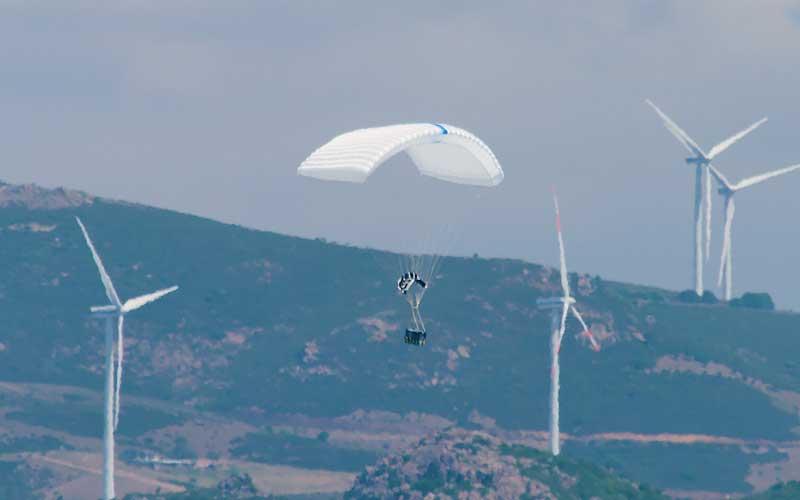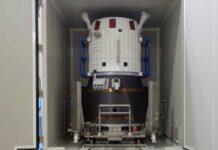
The European Space Agency has announced that it has begun drop tests for its reusable Space Rider spacecraft in Sardinia, Italy. The testing will validate the spacecraft’s recovery system and certify it as fit for flight.
Space Rider is a partially reusable spacecraft being developed by ESA along with prime contractors Thales Alenia Space and Avio. Once operational, the vehicle will be capable of transporting approximately 600 kilograms in payloads to and from space. While the rocket’s Avio-developed Service Module will be expendable, the 4.6-metre Re-entry Module being developed by Thales will be reused for up to six months, lasting around two months each.
A key feature of Space Rider is a controlled and precise recovery phase. This is achieved by employing a parafoil and control winches that enable a landing accuracy of around 150 metres.
In a 5 August press release, ESA announced the completion of an initial drop test using a 3,000-kilogram cube mass simulator. The simulator was dropped from a helicopter at a height of 3.5 kilometres. A drogue parachute deployed the 27-metre-long by 10-metre-wide parafoil, enabling a soft landing at a gentle velocity of around 12 kilometres per hour. During the landing phase, the vehicle was controlled from the ground.
ESA plans to complete another test with the same mass simulator in Autumn, but this time, the landing will be conducted autonomously and will not controlled from the ground. Once ESA has completely validated the recovery system, it will authorize the manufacturing of Space Rider flight models.
The Guiana Space Centre is being utilized as a baseline landing zone for the vehicle, with locations in Italy and Portugal also being considered for Space Rider landing zones.




